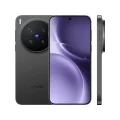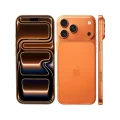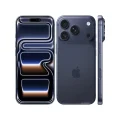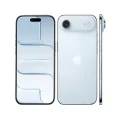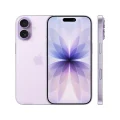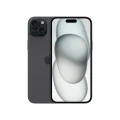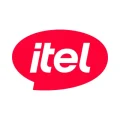- Home
- All Products
- Google Pixel
- Google Pixel 5
Google Pixel 5
-
Battery: Li-Po 4080 mAh
-
RAM: 8GB
-
Storage: 128GB
-
Display: OLED, 6.0 inches
-
Camera: Rear 12.2 MP +16 MP, and Front 8 MP
-
OS: Android 11, upgradable to Android 14
Full Specifications
Price
General
| Model | Google Pixel 5 |
| Announced | 2020, September 30 |
| Released | 2020, October 15 |
| Status | Available |
| Price | 69999 BDT |
Design
| Dimensions | 144.7 x 70.4 x 8 mm (5.70 x 2.77 x 0.31 in) |
| Weight | 151 g (5.33 oz) |
| SIM SIM (Subscriber Identity Module) is a small card that contains mobile network subscriber's account information. This allows the phone using the card to attach to a mobile network. The SIM card is most commonly associated with GSM and UMTS mobile networks. Moving a SIM card from one phone to another allows a subscriber to switch mobile phones without having to contact their mobile network carrier. SIM cards can also be used by a phone to store limited amounts of data, such as phone numbers and text messages. |
Nano-SIM and eSIM IP68 dust/water resistant (up to 1.5m for 30 min) |
| Colors |
Just Black, Sorta Sage |
Display Specification
| Display Type Display Technology => A number of display technologies and types used in mobile phones => TFT (Thin Film Transistor), IPS (In-Place Switching), OLED (Organic Light Emitting Diode), AMOLED (Active-Matrix Organic Light-Emitting Diode), Super AMOLED (an even advanced version of AMOLED), Resistive Touchscreen (Resistive touchscreens contain two layer of conductive material with a very small gap between them which acts as a resistance), Capacitive Touchsceen (Capacitive touchscreen technology consists of a layer of glass coated with a transparent conductor) | OLED |
| Size | 6.0 inches, 87.6 cm2 |
| Resolution | 1080 x 2340 pixels, 19.5:9 ratio |
| Refresh Rate | 90Hz |
| Pixel Density Pixel Density (PPI) is refers to the concentration of pixels on a particular display, measured in pixels per inch (ppi). Pixel density is calculated by dividing the diagonal pixel resolution of a display by its diagonal size, higher pixel density better display quality. | 432 ppi density |
| Display Protection Display Protection => Gorilla Glass is a special alkali-aluminosilicate glass shield with exceptional damage resistance that helps protect mobile displays from scratches, drops, and bumps of everyday use, It is always better to go for a smartphone with Gorilla Glass for that added protection and peace of mind. | Corning Gorilla Glass 6 |
| Features | 85.9% screen-to-body ratio |
Platform
| Operating System OS => Every computer system run on a base software called Operating System (OS). Operating System controls all basic operations of the computer (such as smartphone, PDAs, tablet computers and other handheld devices). The Operating System allows the user to install and run third party applications (apps), apps are used to add new functionality to the device. | Android 11, upgradable to Android 14 |
| Chipset Chipset is a group of integrated circuits designed to perform one or a more dedicated functions, often with real time computing constraints, Popular smartphones are equipped with more advanced embedded chipsets that can do many different tasks depending on their programming. | Qualcomm SM7250 Snapdragon 765G 5G (7 nm) |
| CPU CPU (Central Processing Unit) mostly known as processors, CPU processes instructions in order to carry out certain functions that make your device operate properly. Processors are often described as the brain of computers, smartphones and tablets, Smartphones and tablets rely on processors to carry out their every task, Processors are an incredibly important factor in selecting any type of computing device, including your smartphone. | Octa-core (1x2.4 GHz Kryo 475 Prime & 1x2.2 GHz Kryo 475 Gold & 6x1.8 GHz Kryo 475 Silver) |
| GPU GPU (Graphics Processing Unit) is a single-chip processor designed to rapidly manipulate and alter memory to accelerate the creation of images in a frame buffer intended for output to a display, This includes things such as lighting effects, object transformations, and 3D motion. | Adreno 620 |
Main Camera
| Camera Setup | Dual |
| Resolution |
12.2 MP, f/1.7, 27mm (wide), 1/2.55", 1.4µm, dual pixel PDAF, OIS 16 MP, f/2.2, 117˚ (ultrawide), 1.0µm |
| Features | LED flash, Pixel Shift, Auto-HDR, panorama |
| Video | 4K@30/60fps, 1080p@30/60/120/240fps; gyro-EIS |
Selfie Camera
| Camera Setup | Single |
| Resolution |
8 MP, f/2.0, 24mm (wide), 1/4.0", 1.12µm |
| Video | 1080p@30fps |
| Features |
Auto-HDR |
Network & Connectivity
| Technology | GSM / CDMA / HSPA / EVDO / LTE / 5G |
| Speed | HSPA, LTE-A (CA), 5G |
| Wi-fi Wi-Fi is a popular wireless networking technology using radio waves to provide high-speed network connections that allows devices to communicate without cords or cables, Wi-Fi is increasingly becoming the preferred mode of internet connectivity all over the world. | Wi-Fi 802.11 a/b/g/n/ac, dual-band, Wi-Fi Direct |
| Bluetooth Bluetooth is a wireless communications technology for exchanging data between mobile phones, headsets, computers and other network devices over short distances without wires, Bluetooth technology was primarily designed to support simple wireless networking of personal consumer devices. | 5.0, A2DP, LE, aptX HD |
| NFC NFC (Near field communication) is a set of standards for smartphones and similar devices to establish peer-to-peer radio communications with each other by touching them together or bringing them into proximity, usually no more than a few inches. | Yes |
| Positioning |
GPS, GLONASS, GALILEO, QZSS, BDS |
| FM Radio | No |
| USB | USB Type-C 3.1 |
| 2G Network |
GSM 850 / 900 / 1800 / 1900 CDMA 800 / 1700 / 1900 |
| 3G Network |
HSDPA 850 / 900 / 1700(AWS) / 1900 / 2100 CDMA2000 1xEV-DO |
| 4G Network |
1, 2, 3, 4, 5, 7, 8, 12, 13, 14, 17, 18, 19, 20, 25, 26, 28, 29, 30, 32, 38, 39, 40, 41, 42, 46, 48, 66, 71 |
| 5G Network |
1, 2, 3, 5, 7, 8, 12, 28, 41, 66, 71, 77, 78, 258, 260, 261 Sub6/mmWave - GD1YQ 1, 2, 3, 5, 7, 8, 12, 28, 41, 66, 71, 77, 78 Sub6 - GTT9Q |
Battery
| Battery Type Battery Type => Cell phones run on various kinds of batteries depending on the manufacturer, phone size or shape and features. There are basically four types of cell phone batteries => Lithium Polymer, Lithium Ion, Nickel Metal Hydride and Nickel Cadmium. | Li-Poly (Lithium Polymer) |
| Capacity Battery Capacity is a measure (typically in Amp-hr) of the charge stored by the battery, and is determined by the mass of active material contained in the battery. The battery capacity represents the maximum amount of energy that can be extracted from the battery under certain conditions. | 4080 mAh |
| Removable | No |
| Charging |
18W wired, PD2.0 12W wireless 5W reverse wired |
| Wireless Charging Wireless Charging (Inductive Charging) uses an electromagnetic field to transfer energy between two objects. This is usually done with a charging station. Energy is sent through an inductive coupling to an electrical device, which can then use that energy to charge batteries or run the device. | Yes |
Multimedia
| Loudspeaker | Yes, with stereo speakers |
| Audio Jack | No |
Storage
| Card Slot Memory Card Slot is a special slot for inserting a memory card. Memory cards allow you to expand the phone's built-in memory, A memory card (sometimes called a flash memory card or a storage card) is a small storage medium used to store data such as text, pictures, audio, and video, for use on small, portable or remote computing devices such as mobile phones, mp3 players, digital cameras. | No |
| Internal Storage Internal Storage is a data storage space (flash memory) mostly used in smartphones, tablets and other electronic devices where operating system, apps, music, photos, videos, files and other user data Is stored. |
128GB 8GB RAM UFS 2.1 |
Sensors
| Fingerprint | Yes (rear-mounted) |
| Other Sensors | accelerometer, gyro, proximity, compass, barometer |
About the Google Pixel 5:
The Google Pixel 5, released on October 15, 2020, is a lightweight and compact flagship smartphone, weighing 151g with an 8mm thickness. It runs on Android 11 and is upgradable to Android 14, powered by the Qualcomm Snapdragon 765G 5G chipset with 8GB RAM, offering smooth performance. The 6.0-inch OLED display features a resolution of 1080×2340 pixels, a 90Hz refresh rate, HDR10+ support, and Gorilla Glass 6 protection, delivering vibrant and sharp visuals.
The dual-camera setup includes a 12.2MP main camera and a 16MP ultrawide camera, capable of recording 4K video at 60fps. The 8MP front camera captures quality selfies. The Pixel 5 also features IP68 water and dust resistance, stereo speakers, and 128GB of internal storage without a card slot. The 4080mAh battery supports 18W wired charging, 12W wireless charging, and 5W reverse wireless charging.
Main Key Features
- Display: 6.0-inch OLED, 90Hz refresh rate, HDR10+ support
- Processor: Qualcomm Snapdragon 765G
- RAM: 8GB LPDDR4X
- Storage: 128GB (non-expandable)
- Rear Cameras: 12.2MP main sensor (f/1.7) + 16MP ultrawide (f/2.2)
- Front Camera: 8MP (f/2.0)
- Battery: 4,080mAh with 18W fast charging, 12W wireless charging, reverse wireless charging
- Build: Recycled aluminum body with bio-resin coating
- Water Resistance: IP68 rating
- Software: Android 11, upgradable to Android 14
- Additional Features: 5G support, stereo speakers, rear-mounted fingerprint sensor, reverse wireless charging
Pros & Cons
Pros:
- Compact and ergonomic design, comfortable for one-handed use
- Excellent camera performance with Google’s computational photography
- All-day battery life with efficient power management
- IP68 water and dust resistance for added durability
- Wireless and reverse wireless charging capabilities
- Clean Android experience with timely software updates
Cons:
- Mid-range Snapdragon 765G processor may not meet the demands of intensive gaming or heavy multitasking
- No expandable storage
- Lack of a headphone jack
- No telephoto lens; limited zoom capabilities
- Display resolution is Full HD+; some users may prefer higher resolutions
Why Choose This Phone?
The Google Pixel 5 is ideal for users who prioritize software experience, camera quality, and battery life over raw performance. Its compact design makes it suitable for those who prefer smaller devices, and its all-day battery ensures reliability throughout the day. The inclusion of 5G supports future-proofing the device for upcoming network advancements. If you value timely software updates and a clean Android interface, the Pixel 5 stands out as a solid choice in the mid-range segment.
Opinion
The Google Pixel 5 represents a balanced approach to smartphone design, focusing on user experience rather than chasing the highest specs. Its camera capabilities, powered by Google’s software, deliver impressive results, especially in low-light conditions. While it may not compete with flagship devices in terms of raw performance, it excels in areas that matter most to everyday users. The decision to use a mid-range processor was a strategic one, ensuring efficiency and longevity without unnecessary power consumption. Overall, the Pixel 5 offers a refined and practical smartphone experience.
See Another Model:
Some FAQs of Google Pixel 5
Q: Does the Pixel 5 support 5G?
A: Yes, the Pixel 5 supports both sub-6GHz and mmWave 5G connectivity.
Q: Is the Pixel 5 water-resistant?
A: Yes, the Pixel 5 has an IP68 rating, making it resistant to dust and water immersion up to 1.5 meters for 30 minutes.
Q: Can I expand the storage on the Pixel 5?
A: No, the Pixel 5 does not have a microSD card slot; storage is fixed at 128GB.
Q: Does the Pixel 5 have wireless charging?
A: Yes, the Pixel 5 supports 12W wireless charging and also features reverse wireless charging.
Q: What is the battery life like on the Pixel 5?
A: The Pixel 5 is equipped with a 4,080mAh battery that typically provides all-day usage under moderate to heavy use.
Give Your Review
Disclaimer Note
You can write your own disclaimer from APS Settings -> General -> Disclaimer Note.
